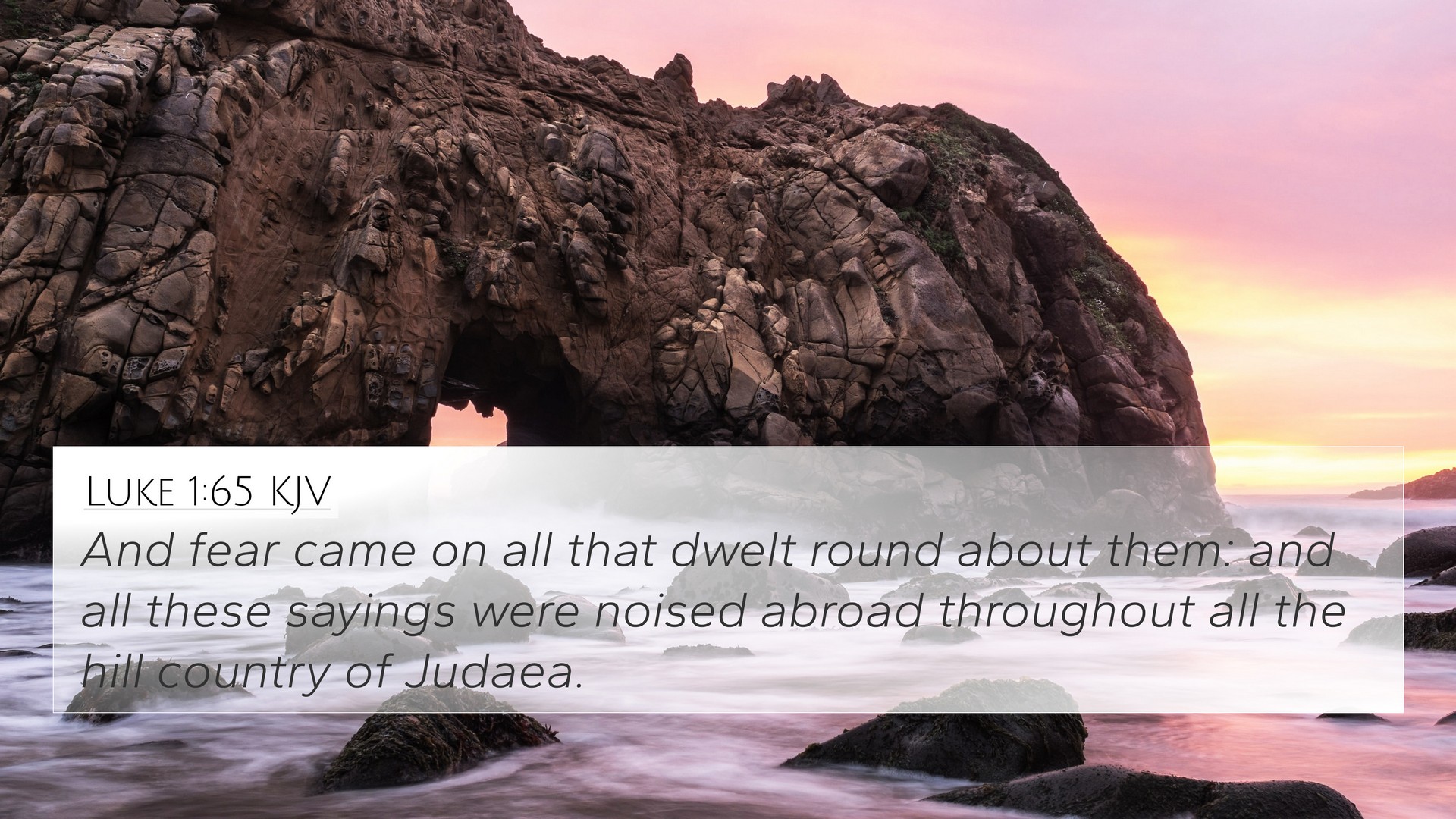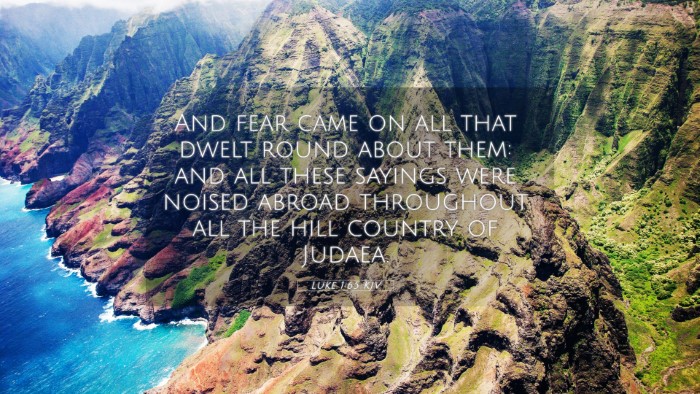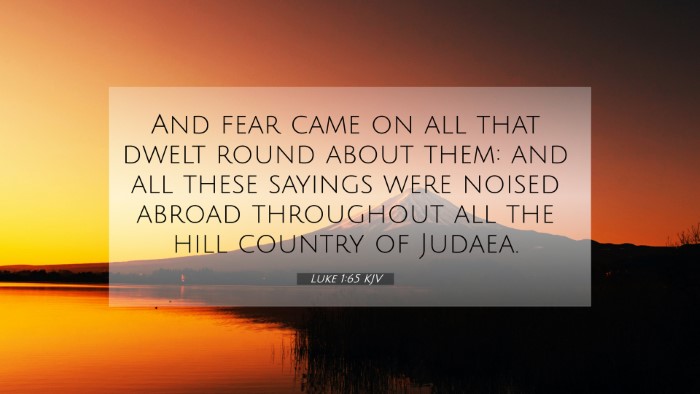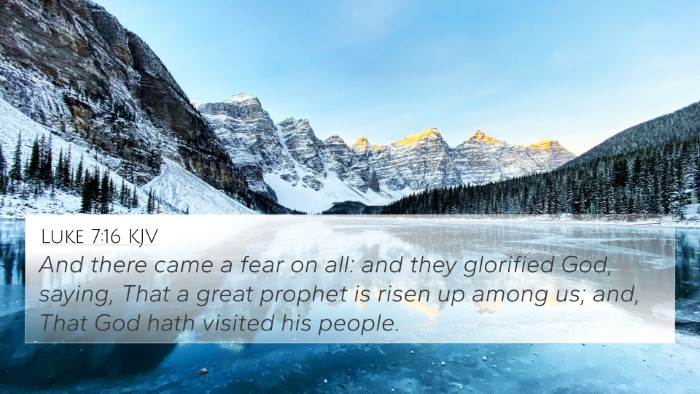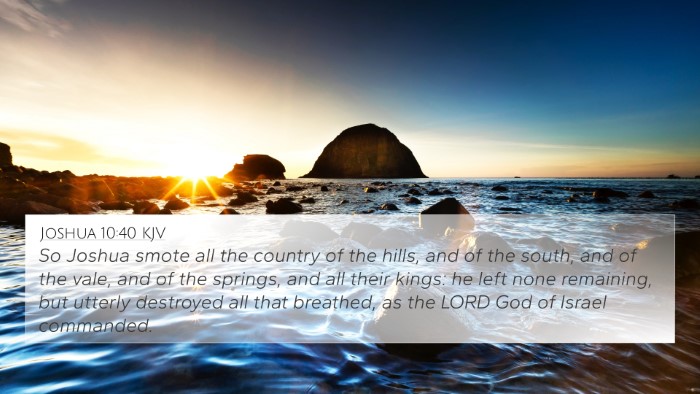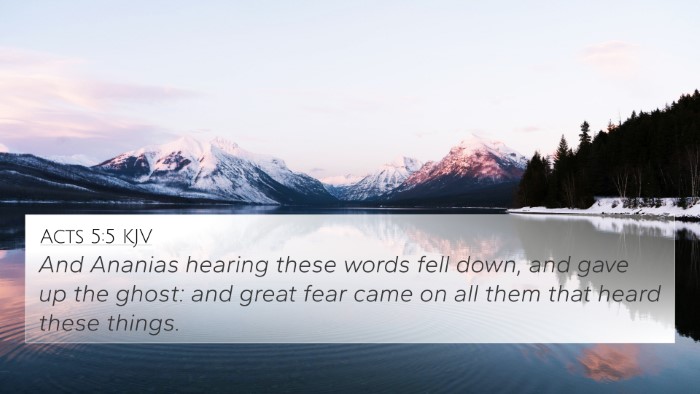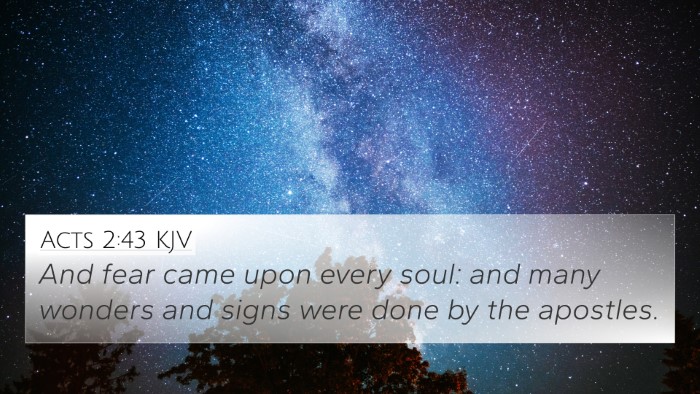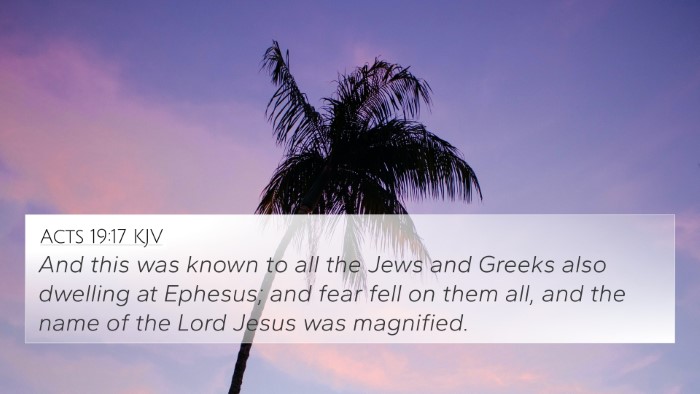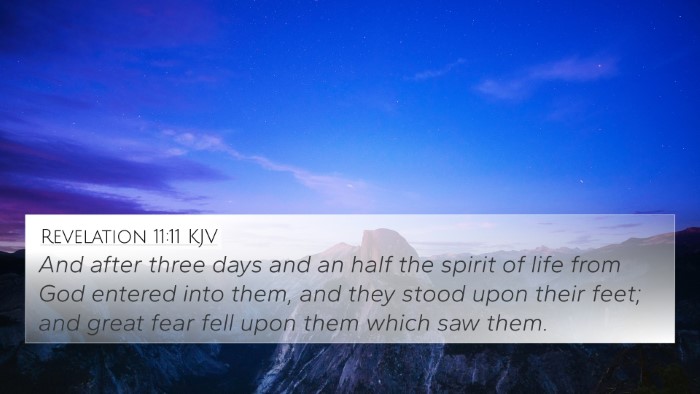Luke 1:65 reads: "And fear came on all that dwelt round about them: and all these sayings were noised abroad throughout all the hill country of Judea." This verse occurs during the narrative surrounding the miraculous birth of John the Baptist, marking a significant moment of divine intervention and heralding God's forthcoming actions through John's ministry.
Meaning and Interpretation
The reactions of awe and fear from the surrounding populace illustrate the impact of divine events on ordinary lives. Public Domain Commentaries provide several insights into this verse, enhancing our understanding through a comparative analysis of similar themes found in the Bible.
Insights from Public Domain Commentaries
Matthew Henry emphasizes that the fear that overcame the people was a natural response to witnessing extraordinary events. This reflects a common biblical theme where divine manifestations invoke profound fear and reverence, guiding individuals towards a deeper understanding of God's power.
Adam Clarke points out that this fear is not merely a dread; it is coupled with expectation and wonder regarding the significance of the miraculous events unfolding, particularly the birth of John. Such a reaction serves as a precursor to the greater works that God is about to reveal through His prophets.
Albert Barnes elaborates that the news of these events rapidly spread within the community, echoing the interconnectedness of testimonies and the importance of community reactions to divine actions. The report of these significant happenings serves to build a communal understanding of God's redemptive history.
Connections between Bible Verses
Luke 1:65 is rich with parallels and connections within the Scriptures. Here are 10 related Bible cross-references that enhance its interpretation:
- Exodus 20:18-20: The fear of the Lord experienced by the Israelites at Mount Sinai parallels the fear experienced in Luke 1:65.
- Acts 2:43: The fear that came upon the early church following miraculous events mirrors the reaction of those around John.
- Luke 2:9: The shepherds were filled with fear upon receiving the angelic message, another instance of divine revelation invoking such a response.
- Revelation 11:11-13: The witness of two prophets who bring great fear upon their enemies reflects a similar theme of prophetic awe.
- Isaiah 8:13: A call to regard the Lord as holy, which connects to the fear experienced when encountering divine messages.
- Mark 4:41: The disciples' fear after witnessing Jesus command the winds illustrates a recurring response to Jesus' authority.
- Matthew 28:4: The guards at Jesus's tomb expressed fear upon encountering the angels, connecting fear with divine encounters.
- 1 Samuel 12:18: The people of Israel trembled in fear when Samuel called upon the Lord, emphasizing a biblical pattern of fear in the face of God’s actions.
- John 1:29: John's recognition of Jesus as the Lamb of God evokes responses of reverence, similar to the reactions in Luke 1:65.
- Matthew 17:6: The disciples' fear during Jesus' transfiguration showcases another instance where divine glory causes fear.
Thematic Connections
The fear experienced by those surrounding the events of John's birth connects several themes within the Bible, including:
- The Fear of God: A common theme where the presence of God or His messengers evokes awe.
- The Role of Prophets: The significance of prophets in preparing the way for God's plan often results in community-wide reactions.
- The Spread of Testimony: The movement of news about divine actions across communities shows how faith and knowledge propagate through shared experience.
Further Study: Cross-Referencing Techniques
For those interested in cross-referencing Biblical texts to deepen their understanding of similar themes, consider the following tools:
- Bible Concordance: A reference tool that lists words found in the Bible and their locations.
- Bible Cross-Reference Guide: A compiled list of scriptures that relate to one another thematically.
- Comprehensive Bible Cross-Reference Materials: Various publications and resources that assist in thematic analysis.
Conclusion
By examining Luke 1:65 through the lens of public domain commentaries and connecting it with related scriptures, one can appreciate the layered meanings and the intertwining nature of Biblical narratives. As God continues to manifest His divine presence, the responses of awe and fear remain a compelling theme, inviting believers to engage deeply with His Word.
